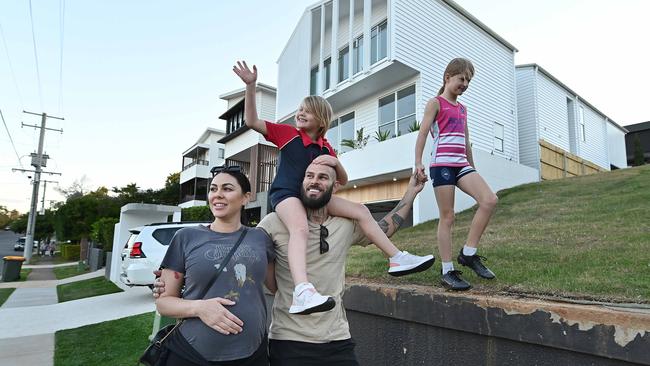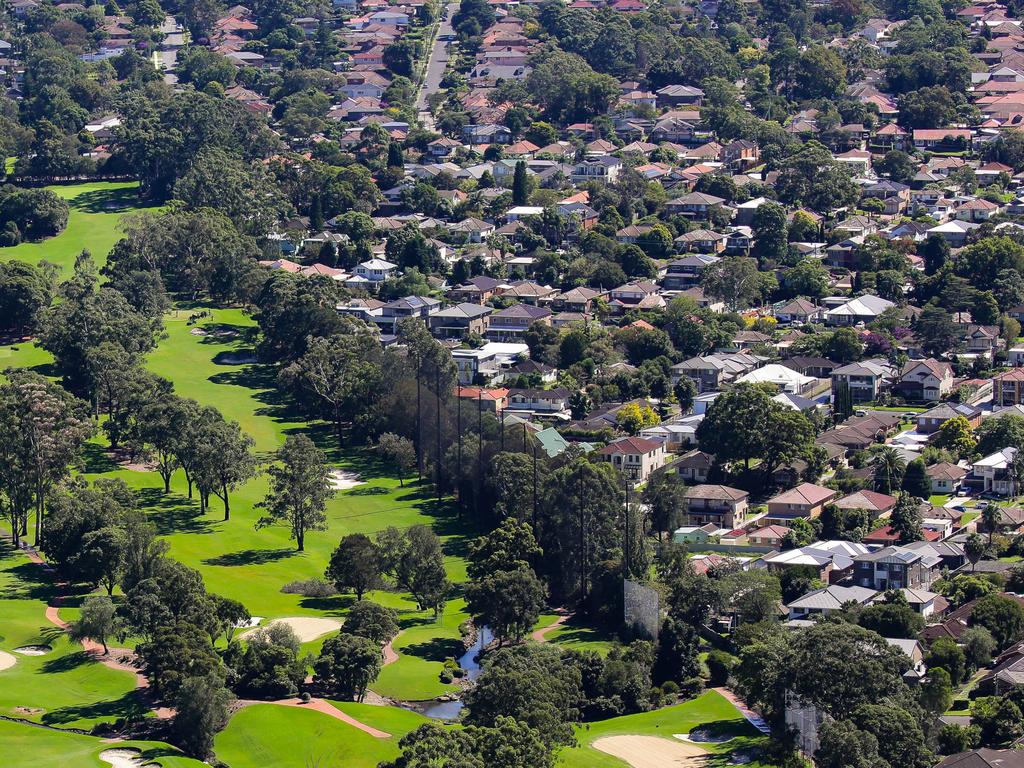‘Lifting rates won’t end housing crisis’, says RBA’s Philip Lowe
Reserve Bank governor Philip Lowe says hiking rates now is not the solution to the nation’s housing affordability crisis.

The collapse in borrowing costs over the past three decades has been the “primary driver” of Australia’s property boom, but Reserve Bank governor Philip Lowe says hiking rates now is not the solution to the nation’s housing affordability crisis.
In his annual speech to the Anika Foundation on Monday, Dr Lowe reaffirmed that cooling the hot property market via tighter monetary policy was “not on the agenda”, and put the onus on other policymakers to determine how more Australians could buy their own homes.
“While it is true that higher interest rates would, all else equal, see lower housing prices, they would also mean fewer jobs and lower wages growth,” he said. “This is a poor trade-off in the current circumstances.”
Australian property prices have soared 18 per cent over the 12 months to August despite intermittent lockdowns, pushing the dream of home ownership further out of the reach of many.
The average property price in NSW has blown out from being roughly equivalent to three times average disposable household income in the 1990s, to more than seven times now, according to RBA research. In Victoria, the price-to-income ratio has surged from less than two, to around 6.5.
The sharp decrease in mortgage rates has made this possible by keeping serviceability roughly steady over the past 30 years, despite ballooning debt.
Instead, the challenge has become saving for a deposit. RBA research shows an average young household would need to save a fifth of their pre-tax income for around nine years to get a 20 per cent deposit for a median-priced home. In the early 2000s it took less than six years.
Cassie and Cameron Sawyer, 34 and 36, purchased a block of land last year to build their family house in the leafy Brisbane suburb of Clayfield. But given the heat of the market, the soon-to-be family of six decided it would be better to sell and buy something more affordable.
They have done that in part, with the sale of the property to settle on Wednesday, but securing their next home has proven more difficult than first thought. After six months of extensive looking they have been forced to enter the tight rental market in order to buy themselves more time.
The couple, who own their own building company, Pey Constructions, want to buy a renovator, but say even homes that need $400,000 of work are selling for a mint.
“We have been putting in offers on and off the market but it’s just not cutting the mustard, there is too much competition,” Ms Sawyer said. “There are some good deals out there but I think people are paying too much. You don’t want to get something and know you overpaid.”
Dr Lowe identified tax reform and planning regulations as better levers to pull to address affordability concerns. “We need to tackle those structural factors (which explain) ever rising housing prices. That’s something, as a citizen, I would like to see addressed, but as a central bank we can’t do anything about it.”
The property market would typically be gearing up for a bumper sales period through the warmer spring months, but locked-down markets are struggling as new property listings dip sharply.
CoreLogic research executive Tim Lawless said rapid price rises in recent months may have pushed a lot of people out of the market
“As soon as we start to see rules around property inspection and social mobility restrictions lifted, we’ll see quite a sudden improvement in vendor willingness to put their property on the market,” Mr Lawless said. Those comments came as the head of the RBA’s economics division, Luci Ellis, told a parliamentary committee looking into housing affordability the supply of new homes was a “major factor” explaining unaffordable housing.
But Dr Ellis said the increase in people’s capacity to repay mortgages since the early 1990s – driven by falling rates and increased availability of credit – had been the “single biggest driver” of climbing property prices in recent decades.
She said policies aimed at providing incentives to groups such as first-home buyers were not a fix for unaffordable housing broadly.
“You don’t improve people’s welfare by making it easier to borrow more and more. The point is you don’t increase affordability by giving people more money to spend on housing.
“Just building more homes will not bring down house (prices) a lot, but it does matter.
“The housing stock changes relatively slowly, and when demand increases, it doesn’t matter how flexible your construction sector is, or how liberal your zoning laws, prices will always go up – the question is how much, and is that too much?”
Also appearing before the parliamentary committee on Monday, Treasury officials said that getting rid of negative gearing and capital gains tax concessions for property investors would only have a “short-term effect” on house prices.
John Swieringa, assistant secretary of Treasury’s social policy division, said he was “not entirely sure” that removing stamp duties were “going to have a huge impact on housing affordability”.







To join the conversation, please log in. Don't have an account? Register
Join the conversation, you are commenting as Logout